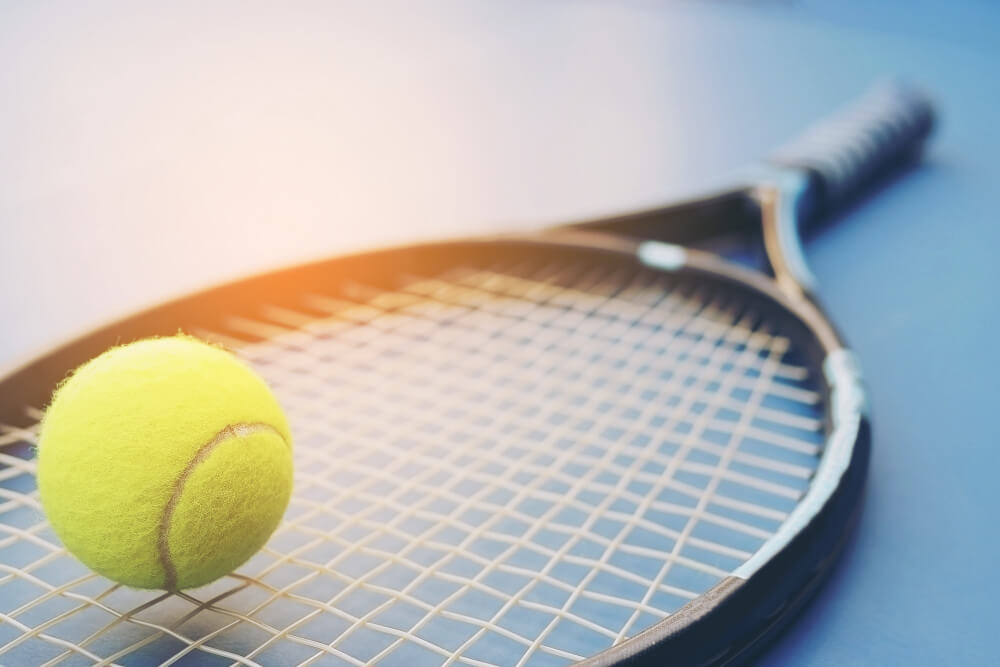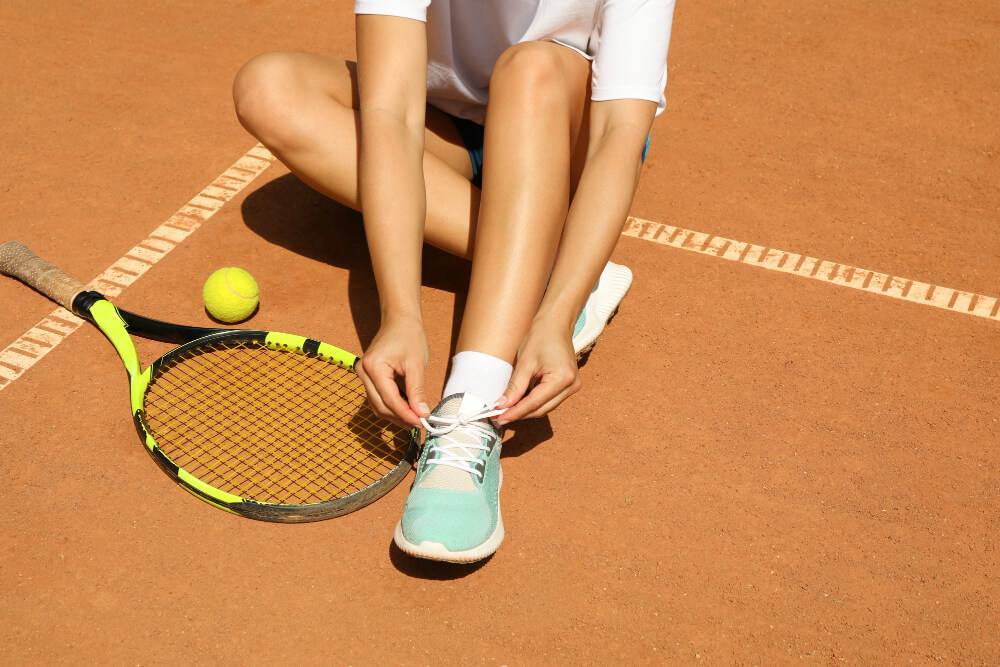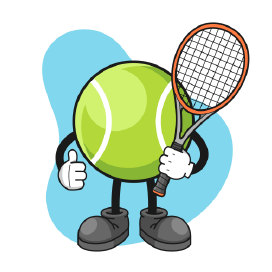When it comes to playing tennis, there are a lot of different factors that can affect your game. One of those factors is the type of racket you use. Do you want a racket with a stiff shaft or a flexible one? Each option has its own set of pros and cons. Here’s a look at some of the key points to consider before making your decision.
What is the shaft of a tennis racket?
The shaft of a tennis racket is the long cylinder that connects the grip and head of the racket. It’s an essential component in delivering power and accuracy to your shots. The shaft should be lightweight and stiff, allowing players maximum control while providing the smooth movement with minimal effort.
The stiffness rating of a shaft can be the difference between winning or losing a match, so it’s important to find the right one for you. Choosing a shaft depends on what style you play and what type of control you need as a player.
Quality shafts are made from materials such as graphite, aluminum alloys, titanium, or boron-based composites for advanced performance levels. Ultimately, the right choice in shaft material can give you an advantage over your opponents–making it an essential part of any serious tennis player’s arsenal.
Importance of choosing the right stiffness level
The stiffness level of a tennis racket can affect several aspects of a player’s game, including power, control, and comfort. A stiffer racket tends to offer more power because it transfers more energy from the player’s swing to the ball. However, this increased power may come at the expense of control. A more flexible racket may offer better control but may not generate as much power.
In addition to power and control, the stiffness level of a tennis racket can also affect a player’s comfort level. A stiffer racket can transmit more shock to the player’s arm, leading to a higher risk of injury or discomfort. In contrast, a more flexible racket may absorb more of the shock, leading to a more comfortable playing experience.
Choosing the right stiffness level for a tennis racket can depend on several factors, including the player’s skill level, playing style, and physical abilities. Players who rely on power may prefer a stiffer racket, while those who prioritize control may prefer a more flexible racket. Similarly, players who are prone to arm injuries may benefit from a more flexible racket that absorbs more shock.
Pros of Using a Stiff Shaft Tennis Racket
Using a stiff shaft tennis racket can be a great choice for some players. For one, it gives them an instant boost in power, enabling them to hit the ball faster and with more force. This increased speed and power allow a player to put their opponent on the defensive faster and step up their game. Additionally, because a stiff shaft frame typically offers less flex than other forms of frames, the user can benefit from heightened precision and control when playing aggressive shots.
Another major advantage of utilizing this type of racket is that they tend to be very efficient in helping players execute accurate serves; creating strategic angles and angles with pinpoint accuracy. Furthermore, by using a stiff shaft model, players have incredible stability when executing volleys. This helps them eliminate bad shots from happening as easily since there’s less shock felt through the frame when connecting with the ball.
Cons of Using a Stiff Shaft Tennis Racket
One significant con of using a stiff shaft tennis racket is that it offers less feel than other rackets. This often makes it difficult to control the ball during volleys and slices, which can be frustrating for players used to having more control over their shots.
Additionally, stiffer rackets tend to provide less power than flexible rackets, forcing advanced players to work harder to generate enough force on their shots and resulting in decreased speed and accuracy.
Finally, there are usually fewer options when it comes to weight and balance in stiff shaft tennis rackets, limiting the range of customization that many competitive players enjoy with more flexible shafts. All in all, although a stiff shaft tennis racket can be an advantageous tool for some types of players, it also presents several drawbacks that should be taken into account before making a purchase.

Choosing the Right Stiffness Level for Your Tennis Racket
Whether you’re an amateur or professional player, correctly selecting the right stiffness level for yourb best tennis racket can be extremely beneficial for improving your game. If a racquet is too stiff, you may lose out on power and spin; however, if it’s too soft, you could be sacrificing control and accuracy when going for shots.
To choose the best racket size and stiffness level, first consider what type of shots you excel at then find the perfect balance of power and control to get the most out of each swing. Consult a trained tennis coach or rackets specialist to identify exact specifications that best suit your playing style and give it a test run with strings at different tension levels before committing to a purchase.
Is a stiff tennis racquet good?
Playing with a stiff tennis racquet can be tricky, as it requires considerable skill and expertise to use effectively. Despite being more difficult to use initially, players with the right technique often find that they favor firmer racquets. Stiffer racquets provide superior feedback, which makes them great for players who like to hit with lots of top spin and power.
However, using a stiff racquet also means giving up some control and stability when significantly less than perfect shots are hit. So for all of those looking for power rather than finesse or softness in their strokes, stiff tennis racquets should definitely be considered!
Is a stiff racquet better for tennis elbow?
When it comes to tennis elbow, stiffer racquets are thought to be beneficial for many players. This is because stiff racquet strings give better energy transfer from the player’s arm when hitting each shot. The sensation of a stiffer frame gives the player more control over their shots, allowing for accuracy and power that a softer racquet does not provide.
Additionally, a stiffer frame minimizes vibration in the racquet, reducing the strain on the tennis elbow joint compared to a flexible frame. Although it might feel uncomfortable at first, many tennis players have reported that using a stiffer frame reduces pain in the elbow over time due to improved form and better positioning of the wrist while playing.
What does stiffness in a tennis racket mean?
Stiffness in a tennis racket affects the power and response of a player’s stroke, as a stiffer racket requires more effort to swing. A stiffer racket will generate more power, while allowing less ‘give’ during impact with the ball, resulting in less shock being transferred up the arm to the shoulder, so is especially beneficial if you suffer from elbow or shoulder pain.
However, stiffer rackets can be difficult to control and require highly accurate shots to achieve maximum performance. A golf pro or other experienced coach can help determine if a stiffer string tension might reduce fatigue or provide an advantage for greater precision for those struggling with accuracy in their shots.

Is stiff or flexible racket better?
When it comes to choosing the right racket for you, deciding between a stiff or flexible racket can be difficult. Each one has certain advantages and disadvantages that make them suitable for different kinds of players with different playing styles. If you want maximum power and accuracy, then a stiffer racket is probably best as they tend to provide more control on shots and generate more power behind each shot.
For those who need more feel from their shots, a flexible racket is likely your best choice as it will enable you to have greater feel in each hit, but might lack in power when compared to the stiffer model. Ultimately, it comes down to trying both and seeing which works best for you and your style of game.
Do stiff racquets cause tennis elbow?
Tennis elbow is a common injury among tennis players and one potential cause may be the stiffness of the racquet. Rigid racquets produce an immense amount of shock when a ball is hit, and this is especially true for amateurs who do not hit with perfect form. The repeated jarring forces placed on the wrist can create strain and eventually, cause tennis elbow by limiting elbow mobility or leading to tissue damage.
Players must find the happy medium between power strokes and control provided by a rigid frame but with enough cushioning to reduce the shock derived from impact. Therefore, to avoid tennis elbow, players should consider using frames that have the right balance of rigidity and flexibility.
What movements should I avoid with tennis elbow?
Tennis elbow is a painful condition that affects the tendons and muscles around the elbow joint. Treatment for this condition includes rest and activity modification – specifically, taking care to avoid certain movements. Activities or motions to be avoided include those which require a gripping action or repeated use of the hand.
Tennis strokes involving backhand, forehand, and serving should be modified, as well as any movement that requires excessive extension of the wrist and/or arm, such as lifting weights. Any activity where you find yourself constantly applying pressure on your already irritated elbow should be halted. Prolonged activities that require constant application of pressure must also be avoided until your tennis elbow has normalized. Ultimately it’s important to listen to your body and seek medical advice if symptoms persist – these steps will help ensure swift recovery and prevent further injury down the line.
In conclusion
it is important to understand what the shaft of a tennis racket is and how that affects the performance when playing. Although stiffer shafts may result in increased power in your shots, it is also important to remember that heavier weight could cause fatigue, particularly if one isn’t used to playing with a stiffer racquet.
There is no definitive answer as to which stiffness level you should choose for your racket because everyone’s playing style is unique and you should always experiment with different results until you find what works best for you. Ultimately, it comes down to preference and what feels most comfortable when swinging. When considering whether or not a stiff racquet is right for you, remember that stiffer rackets might be better suited for certain types of players with an advanced technique while





